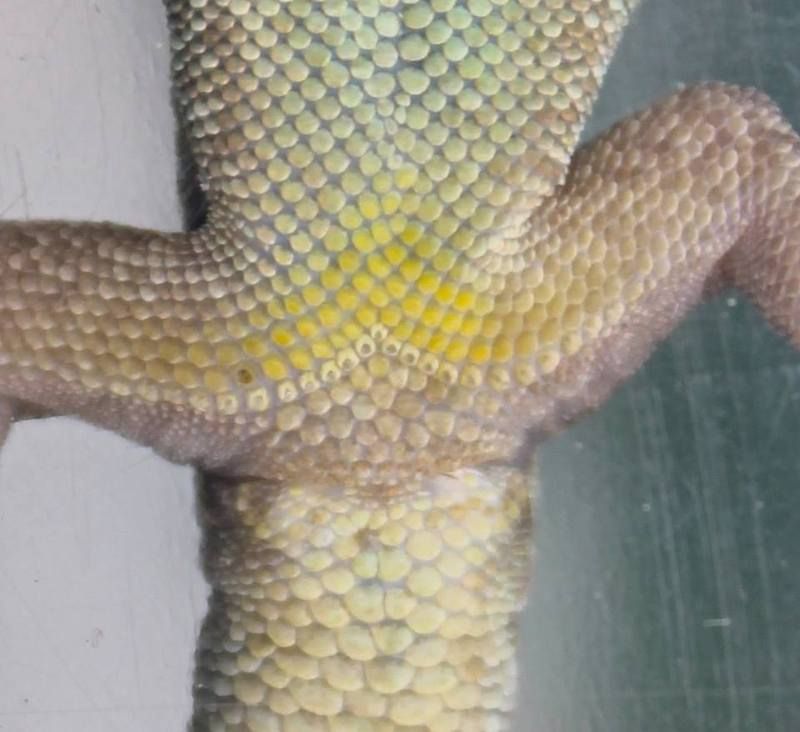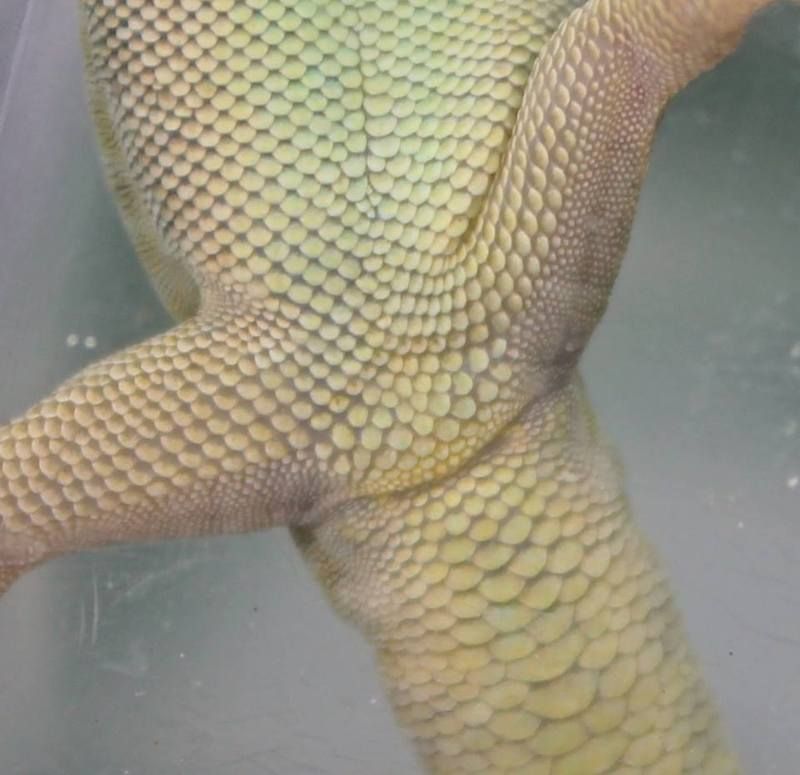mkschaefer
New member
Visual guide to sexing Phelsuma-A pair of mature Phelsuma guimbeaui and juvenile Phelsuma borbonica (agalegae) mater are pictured. Morphological features (head size, pattern in some species, torso length, and proportions) can be used to make a superficial estimation of the sex, but a ventral view of the gecko is always most helpful. You will be able to best view the geckos by gently capturing them in a clear container or when they are against the enclosure glass. If you cannot view them during the day, wait until the evening when the lights are off and you can sometimes see them on the glass. You can use a flashlight or turn on a dim light to view them.
The most distinguishing characteristic of male Phelsuma is the presence of femoral pores, which are just anterior to the cloaca, extend from the midline, and usually excrete waxy secretions, especially in mature animals. The male hemipenes are also generally conspicuous as lateral bulges just posterior to the cloaca and can be used as another marker of the sex.
Females typically have a more rounded tail base at the midline (where the male will often have a depression) and may appear to have very small, shallow depressions where the pores in a male should be. Yellow coloration near the pores is not always a clear indication in all Phelsuma as some species exhibit this in both males and females, but can be used as a reliable marker in others. Phelsuma standingi, for example, can be sexed after hatching by the presence or absence of this yellow coloration.
You can usually see the pores on juvenile Phelsuma within a few months of hatching, but it may be difficult to see them without a loupe, camera, or other tools. For almost all species, the sex can be reliably determined between six months to one year of age, but certain species require more time before the sex is clear. I generally think that if I am straining to see pores, the individual is a female, but it is best to wait until you are sure. I hope this is helpful!
Male Phelsuma guimbeaui

Female Phelsuma guimbeaui

Male Phelsuma borbonica (agalegae) mater

Female Phelsuma borbonica (agalegae) mater

The most distinguishing characteristic of male Phelsuma is the presence of femoral pores, which are just anterior to the cloaca, extend from the midline, and usually excrete waxy secretions, especially in mature animals. The male hemipenes are also generally conspicuous as lateral bulges just posterior to the cloaca and can be used as another marker of the sex.
Females typically have a more rounded tail base at the midline (where the male will often have a depression) and may appear to have very small, shallow depressions where the pores in a male should be. Yellow coloration near the pores is not always a clear indication in all Phelsuma as some species exhibit this in both males and females, but can be used as a reliable marker in others. Phelsuma standingi, for example, can be sexed after hatching by the presence or absence of this yellow coloration.
You can usually see the pores on juvenile Phelsuma within a few months of hatching, but it may be difficult to see them without a loupe, camera, or other tools. For almost all species, the sex can be reliably determined between six months to one year of age, but certain species require more time before the sex is clear. I generally think that if I am straining to see pores, the individual is a female, but it is best to wait until you are sure. I hope this is helpful!
Male Phelsuma guimbeaui

Female Phelsuma guimbeaui

Male Phelsuma borbonica (agalegae) mater

Female Phelsuma borbonica (agalegae) mater


